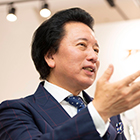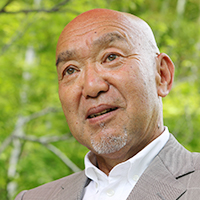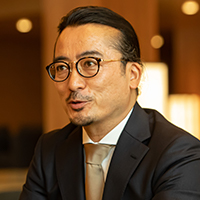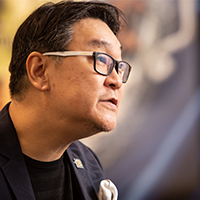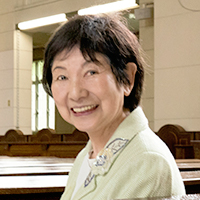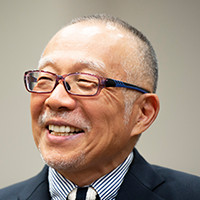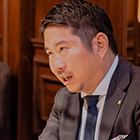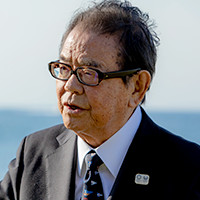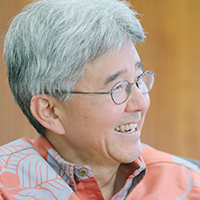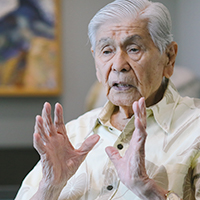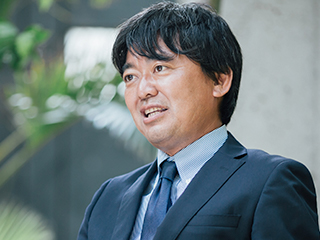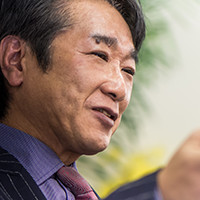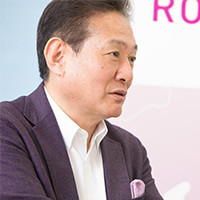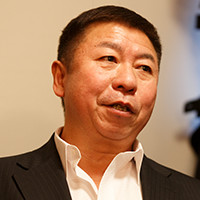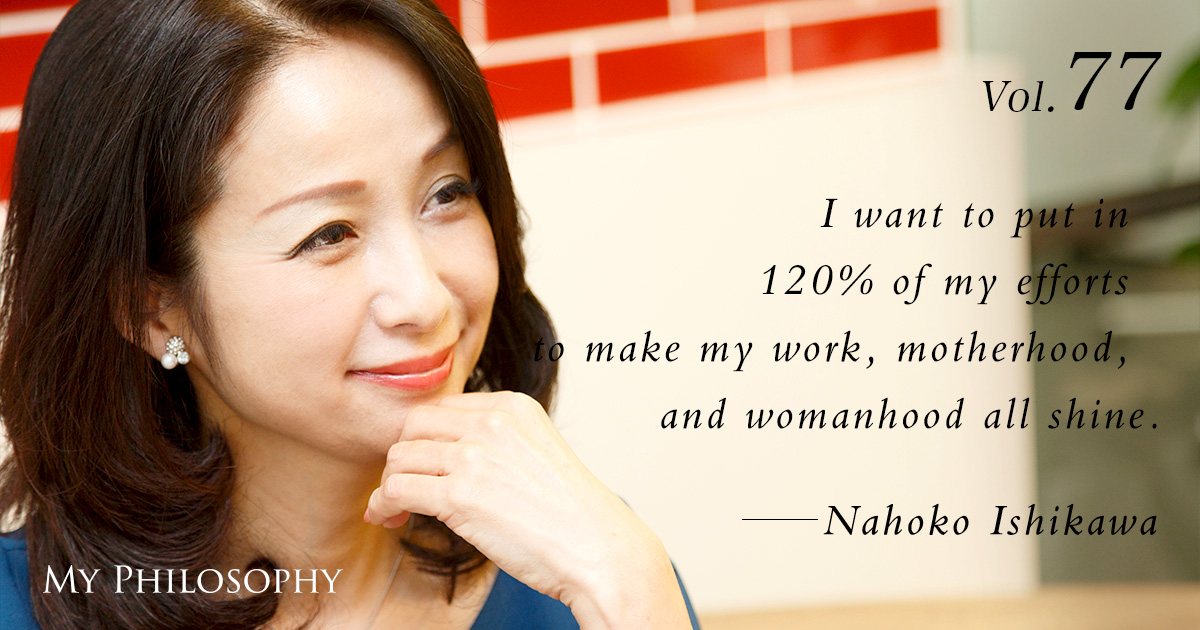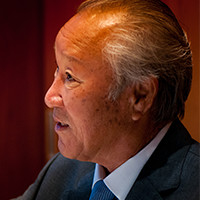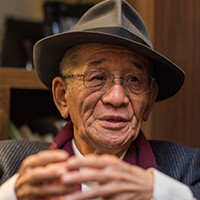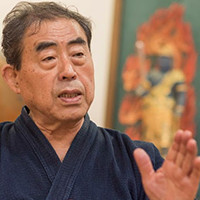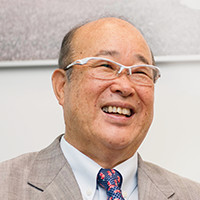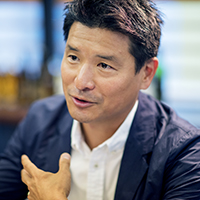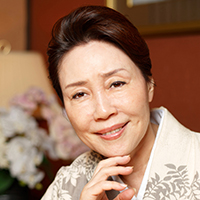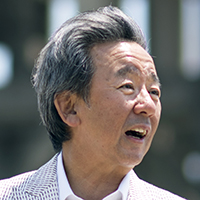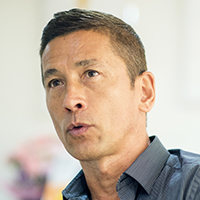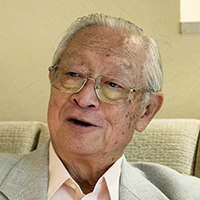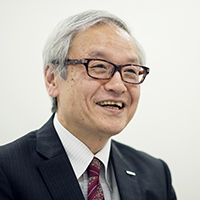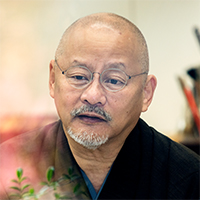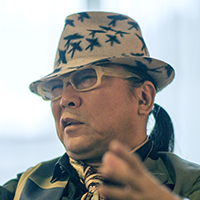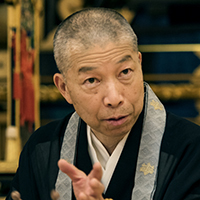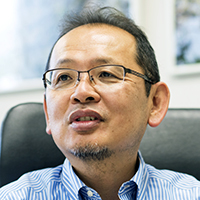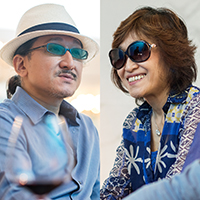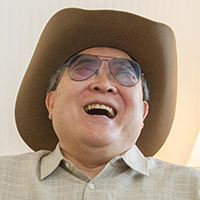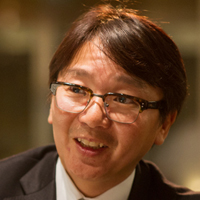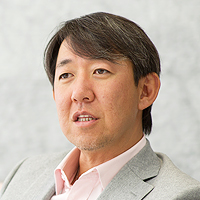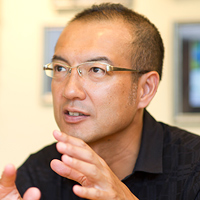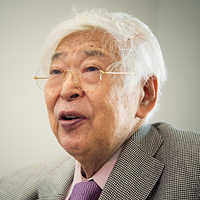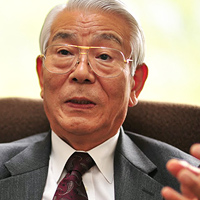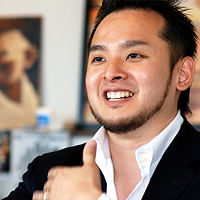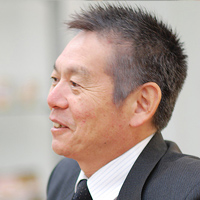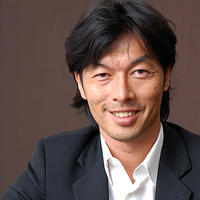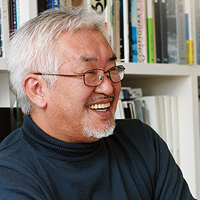
Tomio Taki, a permanent fixture in the fashion and apparel industry, says that the success is all in how you relate to other people. Here, he shares his essential strategies for effective education and communication.
Profile
Vol.54 Tomio Taki
Honorary Advisor, Takihyo Co., Ltd.
School Board Chairman, Taki Academy, Inc.
Board Member, Mikimoto (America) Inc.
Born in 1935 in Aichi Prefecture, Tomio Taki graduated from Keio University’s Faculty of Law and went on to complete the Advanced Management Program at Harvard University Business School. He started working for ITOCHU Corporation in 1957, and at his father's behest, joined the family business Takihyo Co., Ltd. in 1960. Just ten months after joining the company, his father passed away, making him president at only 26 years old. He formed Takihyo Inc. in New York in 1973, subsequently acquiring Anne Klein and Co. In 1978, he became chairman of Takihyo Co., Ltd. and moved to the United States. In 1985, he launched The Donna Karan Company, which would grow to represent American fashion around the world.
In June 1970, Taki became an honorary citizen of Los Angeles. In April 2011, he received both an honorary Doctor of Humane Letters and the Leader of Innovation Medal from Philadelphia University. In the US, he currently sits on the Board of Trustees of The New School, is a member of the Board of Directors of Parsons School of Design, and is CEO of the Honolulu Country Club.
In Japan, he serves as CEO of Continental Co., Ltd., Vice-Chairperson of NPO Jokichi Takamine Research Foundation, and advisor to the Japanese Traditional Dyeing and Weaving Promotion Foundation.
*Positions and titles are current as of the time of this interview (May 2017).
The Question is Not Can You, But Will You
 Always take immediate action on the things you want to do. That’s one rule of mine. Ever since I was a child, I’ve never been good at staying still. And I never hesitated to try something new. I always jumped in head first. I would go where I wanted to go, do what I wanted to do, and meet the people I wanted to meet. When I became president of Takihyo at 26, all I did was act upon everything I wanted to do-from pivoting to western clothing after more than 200 years in the Japanese textile industry to going to the US and producing Donna Karan. As a result, I was able to make my mark on both Japanese apparel and American fashion.
To succeed, you of course need a road map for strategy and direction, but you can’t move forward by living in your head, wondering where to start. You have to step out into the world as you think and explore. The question is not whether you “can” but whether you “do”-that is what’s important. I am reminded of the adage “easier said than done.” While there are many people in the world who talk the talk, so to speak, too many of them don’t follow up their words with action. I think my job now is to help young people overcome an aversion to action and show them that actions speak louder than words.
Once you commit to doing something, it soon becomes apparent whether your plan will work or not. And if it doesn’t, it doesn’t. But the experience can be a catalyst for exploring new directions and approaches that can help you go on to the next best thing. Being indecisive is the worst thing you can do.
Always take immediate action on the things you want to do. That’s one rule of mine. Ever since I was a child, I’ve never been good at staying still. And I never hesitated to try something new. I always jumped in head first. I would go where I wanted to go, do what I wanted to do, and meet the people I wanted to meet. When I became president of Takihyo at 26, all I did was act upon everything I wanted to do-from pivoting to western clothing after more than 200 years in the Japanese textile industry to going to the US and producing Donna Karan. As a result, I was able to make my mark on both Japanese apparel and American fashion.
To succeed, you of course need a road map for strategy and direction, but you can’t move forward by living in your head, wondering where to start. You have to step out into the world as you think and explore. The question is not whether you “can” but whether you “do”-that is what’s important. I am reminded of the adage “easier said than done.” While there are many people in the world who talk the talk, so to speak, too many of them don’t follow up their words with action. I think my job now is to help young people overcome an aversion to action and show them that actions speak louder than words.
Once you commit to doing something, it soon becomes apparent whether your plan will work or not. And if it doesn’t, it doesn’t. But the experience can be a catalyst for exploring new directions and approaches that can help you go on to the next best thing. Being indecisive is the worst thing you can do.
Rule No. 1: You Can Never Know What Others Are Thinking
 There are words you often hear from people in positions of authority: “Why doesn’t that person understand what I’m thinking?” In fact, there is a tendency for people my age-and for the generation born during and just after World War II-to see themselves as examples for the younger generation and expect to be understood without having to say much. But just as human beings all have different faces, it’s only natural that we have different ways of thinking as well. It is fundamentally unreasonable to demand that someone understand you without even saying a word. Whenever trouble arises, we are often quick to point fingers and claim that other people just don’t understand. But from my point of view, that’s presumptuous. You’re either making assumptions or you’re not communicating yourself clearly. I’ve heard people say things like, “I read him one page and he learned the whole book,” but I think that level of understanding makes for an unlikely story. You’ve only assumed that he has understood and are deceiving yourself.
That’s a very dangerous thing in business, where I often talk about the four types of workers that exist. The first type will take action only after understanding the instructions they’ve been given. The second type will understand the instructions but won’t take any action. The third type won’t take action because they don’t understand the instructions. And the fourth type won’t understand the instructions but will take action anyway. This fourth type causes the most trouble. It is easy to be deceived because it looks like they are working, but they’re actually building a house of cards bound to collapse and cause much more harm than good. While it may be taboo for a businessperson to disobey orders and do nothing, if you can help them better understand those orders, there is still a possibility for them to act and succeed.
There are words you often hear from people in positions of authority: “Why doesn’t that person understand what I’m thinking?” In fact, there is a tendency for people my age-and for the generation born during and just after World War II-to see themselves as examples for the younger generation and expect to be understood without having to say much. But just as human beings all have different faces, it’s only natural that we have different ways of thinking as well. It is fundamentally unreasonable to demand that someone understand you without even saying a word. Whenever trouble arises, we are often quick to point fingers and claim that other people just don’t understand. But from my point of view, that’s presumptuous. You’re either making assumptions or you’re not communicating yourself clearly. I’ve heard people say things like, “I read him one page and he learned the whole book,” but I think that level of understanding makes for an unlikely story. You’ve only assumed that he has understood and are deceiving yourself.
That’s a very dangerous thing in business, where I often talk about the four types of workers that exist. The first type will take action only after understanding the instructions they’ve been given. The second type will understand the instructions but won’t take any action. The third type won’t take action because they don’t understand the instructions. And the fourth type won’t understand the instructions but will take action anyway. This fourth type causes the most trouble. It is easy to be deceived because it looks like they are working, but they’re actually building a house of cards bound to collapse and cause much more harm than good. While it may be taboo for a businessperson to disobey orders and do nothing, if you can help them better understand those orders, there is still a possibility for them to act and succeed.
The Five Steps of Communication
 Whenever I begin a task, I communicate with my partner assuming they know nothing about me or my intentions. And so I explain myself almost incessantly. I also ask them about their goals-why they want to do what they are about to do-and ask who and what they need to achieve those goals. From there, we concentrate on the when and how.
To ensure I am understood correctly, I always follow five steps of communication. The first step is to give a proper and adequate explanation, as I mentioned earlier. The second is to lead by example, and third to conduct the same task with members of my team. Fourthly, I let my team perform the task, and if they perform well, we progress to the fifth step: to wait and see the results. It is only then that you can say that you have successfully communicated your ideas and taught them something.
It is entirely out of the question to expect someone to understand you without first explaining yourself to them, but verbal explanations alone are not enough. I believe you first have to lead by example and then work together with someone to truly communicate your ideas. It takes patience to educate someone, and there is no tool more important than communication.
Whenever I begin a task, I communicate with my partner assuming they know nothing about me or my intentions. And so I explain myself almost incessantly. I also ask them about their goals-why they want to do what they are about to do-and ask who and what they need to achieve those goals. From there, we concentrate on the when and how.
To ensure I am understood correctly, I always follow five steps of communication. The first step is to give a proper and adequate explanation, as I mentioned earlier. The second is to lead by example, and third to conduct the same task with members of my team. Fourthly, I let my team perform the task, and if they perform well, we progress to the fifth step: to wait and see the results. It is only then that you can say that you have successfully communicated your ideas and taught them something.
It is entirely out of the question to expect someone to understand you without first explaining yourself to them, but verbal explanations alone are not enough. I believe you first have to lead by example and then work together with someone to truly communicate your ideas. It takes patience to educate someone, and there is no tool more important than communication.
Trust and Love Lay a Foundation for Communication
 Unfortunately, the reality is that we can never entirely understand another person’s feelings. That’s why it is important that we continually communicate to smooth out the differences that inevitably arise. And human warmth is vital to communication. When you talk to someone, look them in the eye, not at your computer screen. Hold their hand, not your smartphone.
I am currently involved in the education of young people as Chairman of the Board at The Taki School, an integrated school system of junior high and senior high schools where students aged 12 to 18 spend the years most critical to personality development. I feel it is an extremely challenging mission to think about how teachers and students should communicate with and among one another and then how best to instruct and encourage that kind of communication. After all, students spend more time with their teachers and peers than they do at home with their parents and siblings.
Children today, even when they’re sitting right in front of you, are glued to their smartphones, constantly fidgeting with their screens. I think it’s a huge problem that they feel more comfortable conversing online than they do talking face to face. While I feel we need to make full use of technology today, the foundations of communication come down to the trust and love you gain from human warmth and compassion.
Unfortunately, the reality is that we can never entirely understand another person’s feelings. That’s why it is important that we continually communicate to smooth out the differences that inevitably arise. And human warmth is vital to communication. When you talk to someone, look them in the eye, not at your computer screen. Hold their hand, not your smartphone.
I am currently involved in the education of young people as Chairman of the Board at The Taki School, an integrated school system of junior high and senior high schools where students aged 12 to 18 spend the years most critical to personality development. I feel it is an extremely challenging mission to think about how teachers and students should communicate with and among one another and then how best to instruct and encourage that kind of communication. After all, students spend more time with their teachers and peers than they do at home with their parents and siblings.
Children today, even when they’re sitting right in front of you, are glued to their smartphones, constantly fidgeting with their screens. I think it’s a huge problem that they feel more comfortable conversing online than they do talking face to face. While I feel we need to make full use of technology today, the foundations of communication come down to the trust and love you gain from human warmth and compassion.

Tomio Taki Honorary Advisor to Takihyo Co., Ltd.
What an eye-opening interview for me. Every one of Taki’s words and episodes was so profound and full of experience that I realized that I’m still just a kid. I felt an immediate affinity for Taki. 1979 was the year I was born and the year he moved to New York. He also shares the same first name as my grandfather-Tomio. Taki autographed the inside cover of my copy of Misao Itoh’s book Manage: Tomio Taki, The Man Who Made Donna Karan. It reads “Daisuke, Big Dreams!” I made up my mind at that moment to pursue something bigger. 「When I started My Philosophy in 2007, my goal was to interview 100 people, but Taki told me, “Forget 100-make it 1,000 if you want to leave these interviews for posterity.” He suggested that I get 100 people from the US, 100 from Europe, 100 from China… “You can go anywhere, can’t you? No matter where you go, we’re all human.” He reassured me that My Philosophy was meaningful and promising. I’ll go to the ends of the earth to live up to a compliment like that. Then and there, I promised to meet with 1,000 successful people across the globe. I can clearly see that this will become my life’s work. After all, a promise is a promise, cross my heart and hope to die. [laughs] An on-the-spot calculation shows that I can meet with 1,000 people over 20 years at a rate of 50 people per year. I’m 38 this year, so I think it would be the greatest day of my life if I could invite 1,000 people to a party at the Imperial Hotel when I turn 60. I’m already making the guest list. In September, we are taking My Philosophy on the road to New York to talk to successful New Yorkers. Tomio Taki’s extensive life experience has taught me just how small I really am. [laughs] But my secret weapon is the courage to take action, and it will take me around the world as I continue to learn and grow.
May 2017 at the Hotel Okura Tokyo. Translated by Queen & Co. Photography: Sebastian Taguchi




























